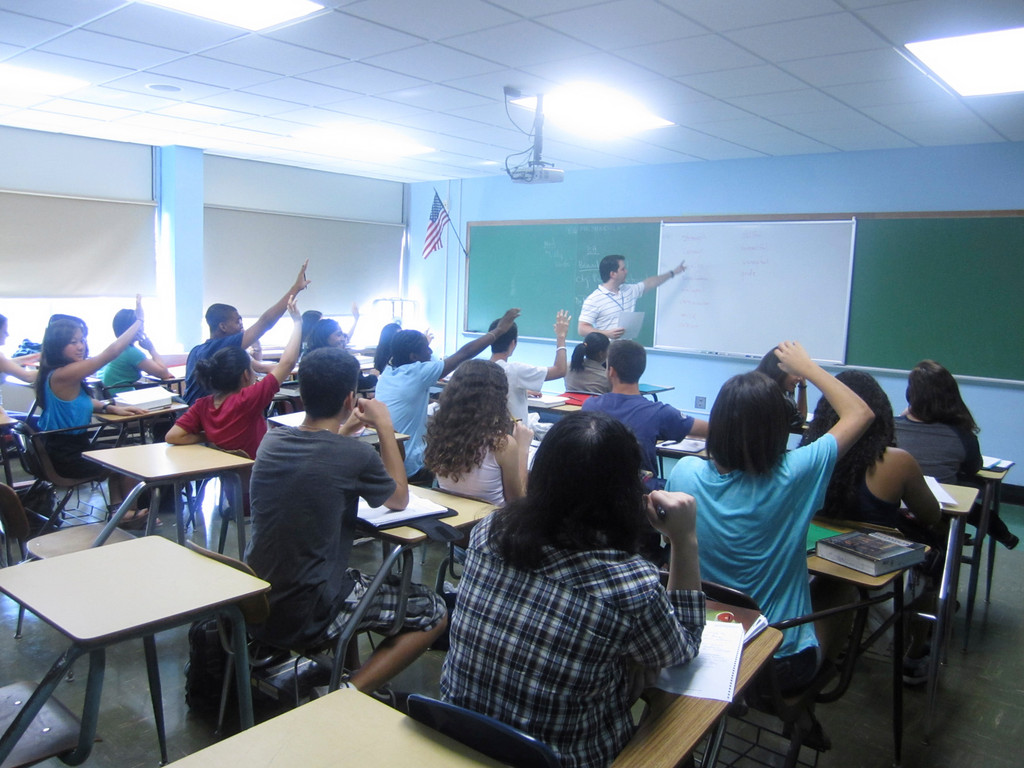Lawrence changes teacher observations
District seeks to improve performance with ‘snapshot’ visits
As a means of improving teacher performance and hopefully boosting student achievement, the Lawrence School District and Lawrence Teachers Association have agreed to changes in instructor observations, which are part of annual appraisals and performance reviews. The district and the teachers’ union are currently in contract negotiations.
Besides the traditional full-period visits to observe how teachers are performing, supervisors will also conduct more frequent, shorter “snapshot” classroom visits.
There will be two types of snapshot visits, the undocumented, informal “pop-in” and the more formal “drop-in” that will be followed up with a brief letter to the teacher from the supervisor. Teachers will now also have the opportunity to visit one another’s classrooms to learn from their colleagues.
Substantially more time will be set aside for administrators to visit classrooms, and these more-frequent and shorter visits will provide teachers with more feedback more often and more quickly, according to LTA President Lori Skonberg, a fifth-grade teacher at Lawrence Middle School who has taught for 32 years.
“Administrators will be able to visit more teachers more often, seeing a greater variety of lessons and activities and therefore getting a much more accurate picture of what is happening in a teacher’s classroom on a day-to-day basis,” Skonberg said.
Infrequent full-period visits include pre- and post-observation meetings with the teachers and written observation reports. Such a process has proven cumbersome, Skonberg said, and keeps administrators busy and out of the classroom for too much time. She added that the new structure will improved the performance-evaluation system and should increase communication between the teachers and their supervisors.
Previously, teachers had supervisors who were responsible for large numbers of teachers at the middle and high schools who taught more than one subject area. Because of the numbers and the travel time between buildings, it was difficult for teachers and supervisors to meet as often as they wanted, Skonberg said.
“The new system has building-level supervisors, most of whom are in charge of a single discipline,” she explained, noting that the district’s eight teacher/supervisors also teach two or three classes a day, which gives them an understanding of student needs. “The lesser caseloads free up the supervisors to get into the classroom more, and they are much more accessible, being that they no longer have to travel between buildings.”
Teachers will receive three to six drop-ins per year and an unlimited number of pop-ins, according to Superintendent Gary Schall, who said he conducts an average of 10 classroom visits per day. “The teacher will gain the insights and perspective of the supervisor,” Schall said. “It is similar to a baseball coach who will work with a batter. The coach offers the player pointers and perspective only seen by an outside expert.”
Prof. Alan Singer, director of secondary education and social studies research at Hofstra University, said he has seen school districts generate positive results with building supervisors overseeing teachers, though he added that he is not a proponent of snapshot visits, believing they undermine teachers and leave them feeling uneasy.
Singer explained that he views the use of such visits as a shift from an educational approach to supervision to a management approach. It is a corporate model, he said, that he does not think should be applied to education.
“I find the snapshot observation destructive — it eventually leaves the teacher feeling apprehensive and that they are always being watched,” said Singer, who noted that in New York City, snapshot visits have been used to catch teachers not doing their jobs. “[Using] building supervisors [is] a very good idea, as they are part of the staff,” he added.
Schall countered that the district is not trying to catch teachers who are not performing, but rather is trying to create a “corporate level of accountability” — not just evaluating teachers, but producing what he called “instructional leaders.”
“With the challenging times that schools throughout the nation are facing,” he said, “it is important for us as educators to stay focused on scholarly pursuit through ongoing academic discourse, collaboration and reflective instructional practice.”






